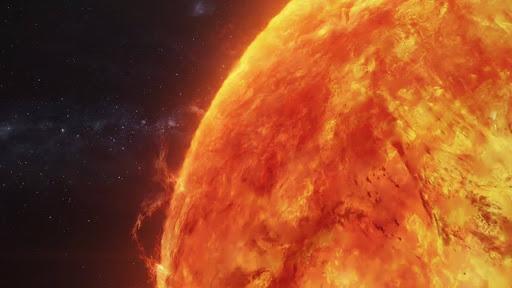
‘Peacock Jets’ on Sun Linked to Magnetic Flux Cancellation
The Sun, our star, is a fascinating and complex entity that has been the subject of human fascination for centuries. Its magnetic fields, in particular, play a crucial role in shaping our understanding of space weather and its impact on our technology. Recently, scientists have made a groundbreaking discovery about the Sun’s lower atmosphere, revealing the presence of ‘peacock jets’, recurrent fan-shaped eruptions that are powered by magnetic flux cancellation.
In this blog post, we will delve into the world of solar dynamics and explore the significance of this new finding. We will also examine the implications of this research for predicting space weather and safeguarding our technology.
What are Peacock Jets?
Peacock jets are a type of solar eruption that occurs in the Sun’s lower atmosphere, specifically in the chromosphere. These jets are characterized by their fan-shaped appearance, with a bright, condensed base and a more diffuse, wispy extension. They are recurrent events, meaning they occur repeatedly over a specific period, and are powered by magnetic fields.
To understand how peacock jets form, it is essential to comprehend the dynamics of the Sun’s magnetic fields. The Sun’s magnetic field is a complex system of lines that emerge from the star’s surface, creating a pattern of magnetic field lines. These lines can be thought of as a network of tubes that carry energy and plasma from the Sun’s core to its surface.
Magnetic Flux Cancellation
Magnetic flux cancellation is a process that occurs when two opposing magnetic fields meet and cancel each other out. This process is crucial for understanding the formation of peacock jets. When two magnetic fields with opposite polarities interact, they create a region of zero magnetic field strength, known as the neutral point. This neutral point is the trigger for the energy release that powers the peacock jet.
The process of magnetic flux cancellation is thought to occur when two loops of magnetic field lines, known as magnetic flux tubes, collide. These tubes are formed when magnetic field lines emerge from the Sun’s surface and rise through the chromosphere. When the tubes collide, they create a region of intense magnetic field strength, which leads to the formation of the peacock jet.
How do Peacock Jets Impact Space Weather?
Peacock jets are significant for predicting space weather, as they can influence the solar wind and its impact on Earth’s magnetic field. The solar wind is a stream of charged particles emitted by the Sun, which can interact with Earth’s magnetic field and cause aurorae to appear in the polar regions.
Peacock jets can also impact the solar wind by creating shock waves that propagate through the Sun’s corona, the outer atmosphere. These shock waves can compress and heat the solar wind, leading to increased solar activity and a stronger impact on Earth’s magnetic field.
Furthermore, peacock jets can influence the formation of coronal mass ejections (CMEs), massive clouds of plasma that can be propelled into space. CMEs can interact with Earth’s magnetic field, causing geomagnetic storms that can disrupt satellite communications and electrical grids.
Significance of this Research
The discovery of peacock jets and their connection to magnetic flux cancellation is a significant breakthrough in our understanding of solar dynamics. This research has important implications for predicting space weather and safeguarding our technology.
By understanding the processes that drive peacock jets, scientists can better predict the occurrence of solar flares and CMEs, allowing for more accurate forecasting of space weather. This information can be used to protect our technology and infrastructure from the impacts of space weather, ensuring the continued functioning of our global communication and navigation systems.
Conclusion
The discovery of peacock jets and their connection to magnetic flux cancellation is a significant advancement in our understanding of solar dynamics. These recurrent fan-shaped eruptions are powered by magnetic fields and have important implications for predicting space weather and safeguarding our technology.
As scientists continue to study the Sun and its magnetic fields, we can expect to uncover even more secrets about our star and its impact on our planet. The study of peacock jets is an exciting area of research that holds great promise for improving our understanding of space weather and its effects on our technology.
Source:






